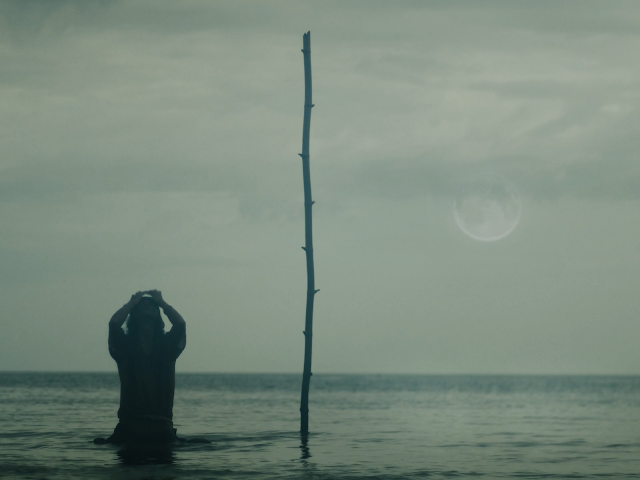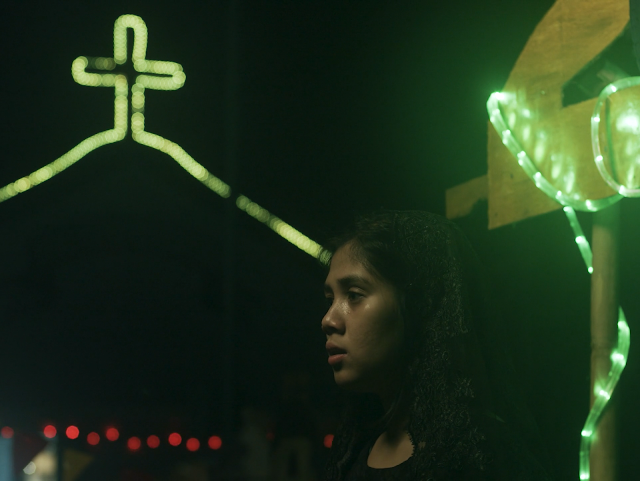Hilum unfolds itself as a story of Mona, a Filipino teen trying to follow the steps of her mother to become a professional mourner. However, she faced the most ironic setback: her inability to cry. But if the intercut steeped in symbolism in the beginning is any indication, the short film outgrows its satirical start to astound viewers with a poignant story of family relations.
Paid mourning, although still practised in various parts of Asia, is definitely viewed as peculiar by modern day standards. This practice, juxtaposed against the modern way of life, serves as an excellent set-up to surface the frictions of the then and now. The job is to fake crying, but the mother forbids Mona from artificially inducing tears. Although authenticity does not seem to be an issue, since mourners-for-hire don’t cry out of grief for the deceased, the mother insists on self-induced crying. She even threw a tantrum in the middle of a funeral upon discovering that Mona had used a forbidden trick. But if the outcome is the spectacle of a mourning crowd, and that was the only stake involved, why does the way of arriving to tears matters?
Apparently it matters, a lot. The mother's insistence catalyses the move for Mona to seek a shaman to "cure" her inability to cry. Through a series of steps that the Western lens would deem psychoanalysis, the shaman unpacks Mona's repressed grief over the tragic passing of her father and she eventually cries.
I have to say that this simplistic recount of the story—a rough sketch for the film to take shape within our minds—does little justice to the brilliance of Don Josephus Raphael Eblahan. Recurrent motifs of the moon and water layers the short with a visually rich and poetic dimension, alluding to our shared experiences and conceptions of these natural bodies. Not just a silent spectator from afar, the moon is said to exert an influence on both tides and human sentiments. Regardless of how true that is, this reference nevertheless establishes a claim crucial to the story; we never really have full conscious control over our emotions, for they are always subjected to invisible forces. Perhaps, we can never really make sense of our minds—external or internal.
Water is depicted in an endless motion, echoing Mona's unsettled state of mind. The material existence of water, on the other hand, acts as a barrier that prevents Mona from reaching the ship on the horizon; the place of where she sees her father. Still, it is the same water body that paves the way for the shaman to connect with the spirits to find Mona's tears and return them to her. Its natural virtue of boundlessness and fluid connectivity brings Mona back to her feelings of grief.
The cross is another motif that repeats throughout the short. Unlike the poetic adornments of the moon and water, the cross hints at a subtext of regional complexities. In their sleep, the mother is always seen with her stone crucifix tugged close. The cross also appears in the funeral scenes. These instances give a clear indication of the mother's Christianity.
Yet, when seeking to be "cured" of her inability to cry, Mona deliberately seeks a shaman, who is a figure in Filipino spiritual belief system that predates the colonial import of Christianity. The shaman actually told Mona to not tell the mother that "you came to me," strongly suggesting that the mother has a negative perception of the indigenous spirituality. However, it successfully gives Mona back her tears, an act which the mother couldn't do.
Hilum still keeps me thinking about the correspondence between external appearance and internal state of mind. Crying is often seen as a display of grief, but we all know that it can be a performance or a manipulated experience. How about when one could no longer put on a spectacle of sorrow? It certainly doesn’t imply a deficient capacity to feel. Rather, one feels too much that perhaps it’s better to not feel anything at all.
Hilum by Don Josephus Raphael Eblahan is competing at the 2021 Clermont Ferrand International Short Film Festival taking place from 29 January to 6 February.


